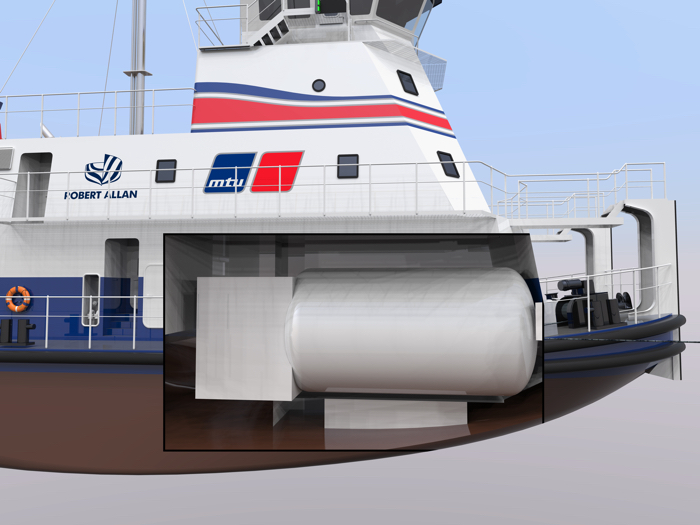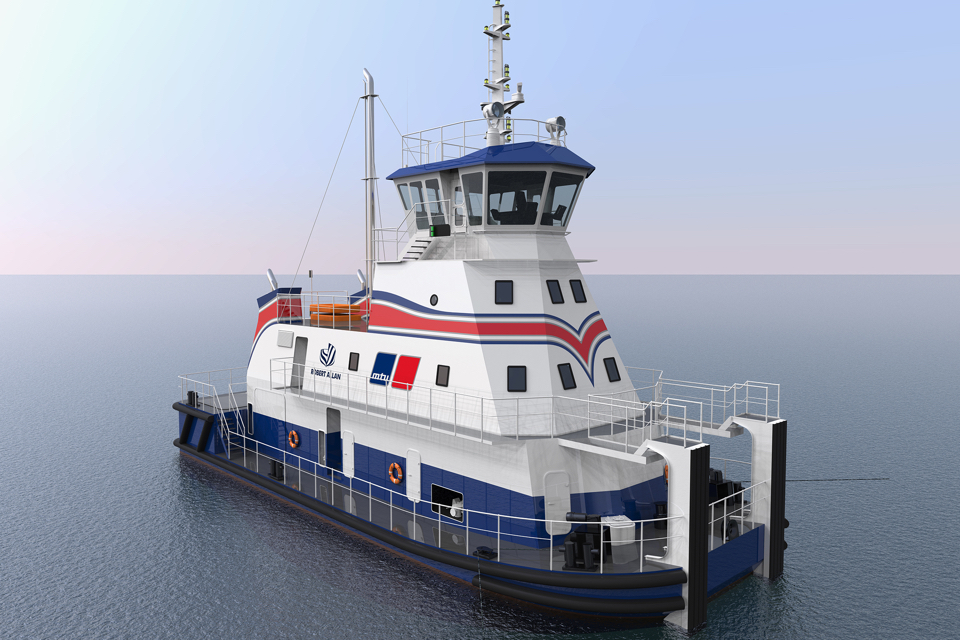Rolls-Royce and Canadian vessel designers Robert Allan have developed the world’s first shallow-water push boat sailing on LNG. The push boat is designed for use on inland waterways and its two MTU 8V4000M55RN natural gas engines from Rolls-Royce significantly reduce emissions.
At the International Workboat Show in New Orleans, which took place 4-6 December, classification society DNV GL gave its “Approval in Principle” to the new design. This independent evaluation of the design concept within a given framework states that the design is fundamentally feasible and that there are no fundamental implementation concerns.
Design Alterations
The gas-powered shallow-water push boat is based on the Robert Allan RApide 2800-Z2 design, which is already used on some diesel-powered vessels on the River Amazon. The vessel design was specially modified for LNG to accommodate the two 746 kW MTU 8V4000M55RN engines (complete with IMO Tier III emission control systems) and the entire LNG supply system as well as the gas control and safety systems and the overall vessel control system.
The hull – externally unchanged – was redesigned to accommodate the seventy-cubic-metre gas tank as well as the usual engine accoutrements, and to provide crew with a pleasant working environment. The lower crew cabins, saloon and galley were moved up one level, and the deckhouse was enlarged.

Rolls-Royce will soon deliver its first MTU 8V4000M55N gas engines to municipal works company Stadtwerke Konstanz in southern Germany. These will be used to power the first LNG-powered car ferry on Lake Constance.
Technical data for the RApide 2800-G shallow-water push boat:
- Engines: 2 x MTU 8V4000M55RN, IMO Tier III
- Power output: 746 kW each
- Length overall: 28 metres
- Beam: 10.05 metres
- Topsides: 3.2 metres
- Draught: 2.5 metres
- LNG tank capacity: seventy cubic metres








